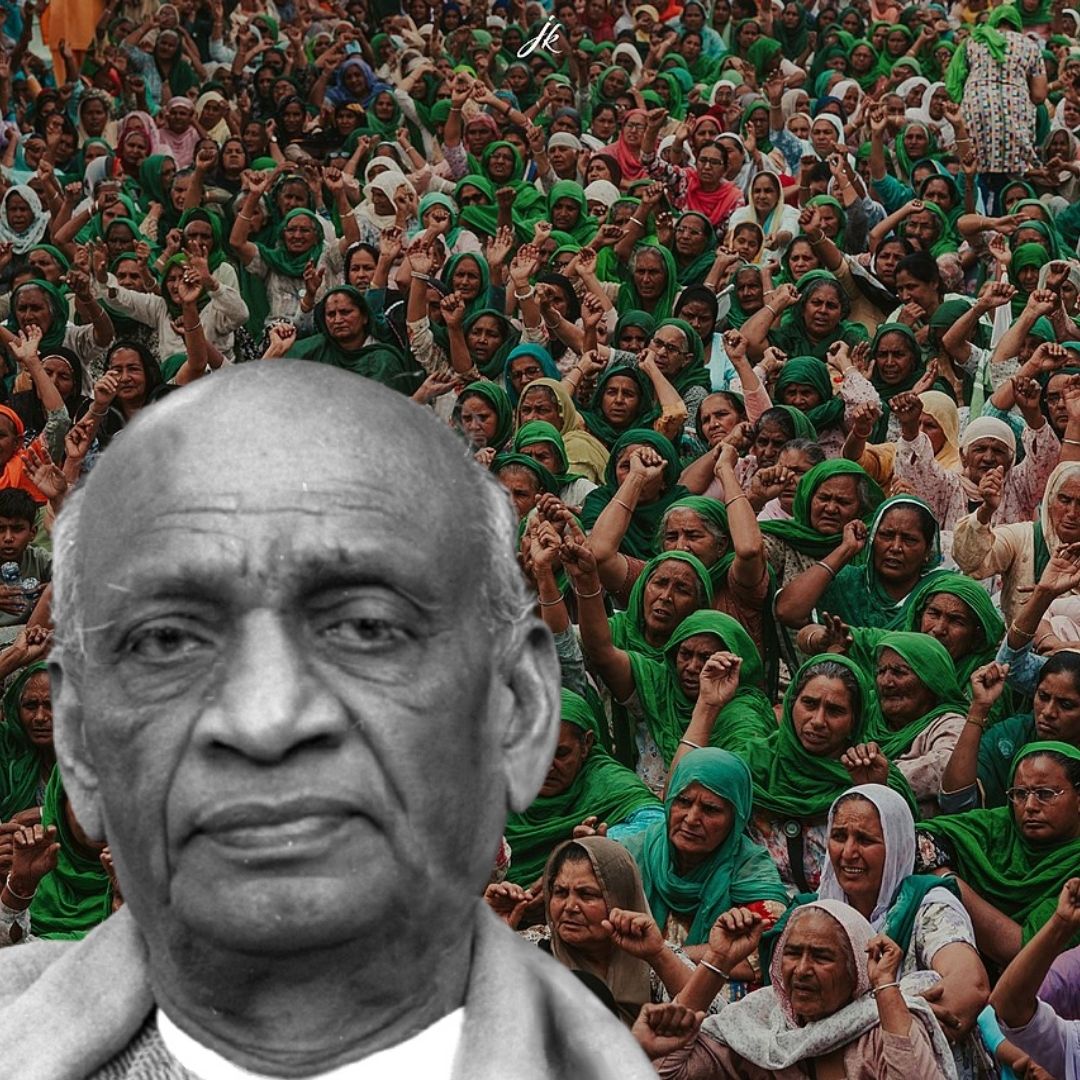Why Farmers Titled Patel As 'Sardar' After Bardoli Satyagraha?
Writer: Ratika Rana
Her primary objective is to inform, promote, educate and cultivate readers through writing.
Gujarat, 15 Dec 2021 8:29 AM GMT
Editor : Ankita Singh |
A literature lover who likes delving deeper into a wide range of societal issues and expresses her opinions about the same. Keeps looking for best-read recommendations while enjoying her coffee and tea.
Creatives : Ratika Rana
Her primary objective is to inform, promote, educate and cultivate readers through writing.
Today marks the 71st death anniversary of a freedom fighter, who played an instrumental role in uniting Indians in the freedom struggle, both before and after the independence, thus making Vallabhbhai Patel, the 'Sardar'.
Indian farmers have always struggled to fight for their rights and against injustice. In June 1928, a small village named Bardoli in Gujarat protested against the oppressive British regimes, thus forming a significant chapter in India's Civil Disobedience movement. The town of Bardoli faced substantial financial troubles in 1925, but the British regime increased the taxes by 30 percent. On one hand, people did not have enough to feed their own families; while on the other hand, the Britishers were relentlessly pushing them to pay taxes for property and crops.
Several activists from Gujarat approached the state's most prominent freedom fighter, Vallabhbhai Patel, who then served as the Ahmedabad Municipal President. Patel made it clear to the farmers' delegation that the revolt might lead to them losing their properties and landing in jail. Nonetheless, the villagers said that they were prepared for the worst but would not give in to the injustice by the British.
How Did Bardoli Satyagraha Start?
Then, Patel approached Gandhi, and when the latter asked Patel about his opinion, he said that he saw prospects in the revolt. However, it was clear that neither Gandhi nor Congress would be actively involved in the struggle. Initially, Patel wrote to the Governor of Bombay requesting him to slash the taxes in the face of calamities. However, the governor ignored Patel's letter and announced a specific date for collecting taxes. Patel asked the farmers to maintain an entirely non-violent approach and not give in to any incitement from the British. Moreover, he said that the protest would end only after cancelled taxes for the entire year.
The government resolved to end the protests. The government began to auction people's houses and their lands, but not a single person from the state came forward to claim them. Some rich people from Bombay and one of the protesting villages agreed to pay the taxes under pressure. After that, the rest of the villages undertook a complete social boycott against them. Several Indians quit their post in government offices to show solidarity with the peasants. In 1928, an agreement was signed to restore all the confiscated land to the rightful owners. While the farmers celebrated their victory, Patel ensured that none of the farmers was left out.
Patel credited Gandhi's teachings on non-violence and the undying resolve of the farmers for their victory, and the rest of India recognised Patel's vital leadership role in the struggle. The women gave Patel's title of 'Sardar' for the first time. After Bardoli Satyagraha, Sardar Patel became one of the most prominent faces of India's freedom struggle.
Also Read: Horrific! Mother Jailed For Killing 27-Day-Old Baby In Kerala
 All section
All section















